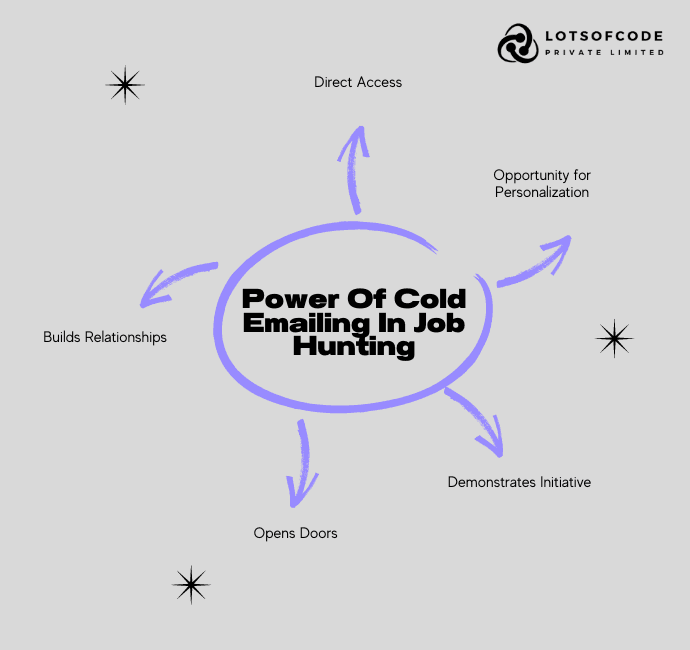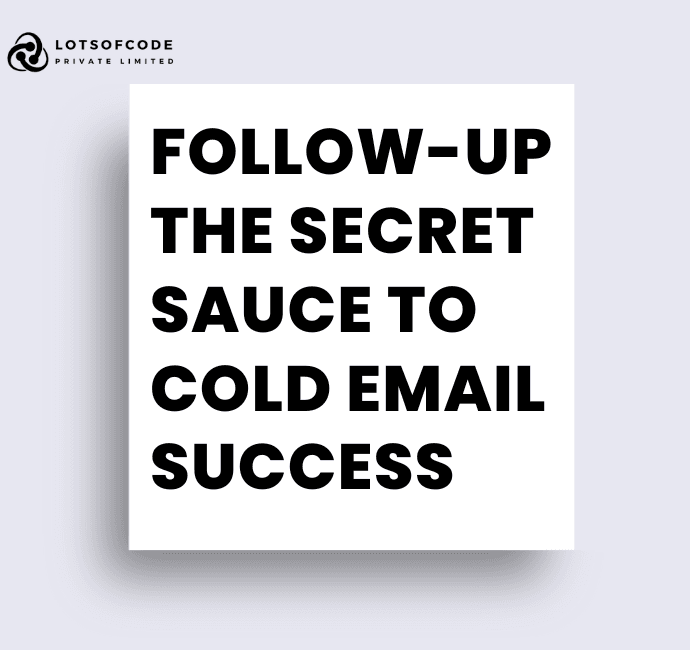Write Cold Email For Job and Interview
Cold emailing has become a powerful tool in the arsenal of job seekers worldwide. In a job market inundated with applicants, standing out from the crowd is essential, and a well-crafted cold email can make all the difference. But what exactly makes a cold email effective, and how can you ensure yours gets noticed?
In this guide, we’ll delve into the intricacies of crafting compelling cold emails for job applications, providing you with the strategies and techniques needed to unlock success in your job search.
Cold emailing is more than just sending a generic message to a hiring manager or recruiter; it’s about strategically positioning yourself as the ideal candidate for the job. A successful cold email requires careful research, personalization, and a clear value proposition.
It’s an opportunity to showcase your skills, experience, and enthusiasm for the role while also demonstrating your professionalism and attention to detail. With the right approach, a cold email can open doors and lead to valuable career opportunities.
Understanding the Power of Cold Emails in Job Hunting
In today’s competitive job market, traditional methods of job hunting are no longer sufficient. While job boards and online applications have their place, they often result in your resume getting lost in a sea of applicants. Cold emailing, on the other hand, allows you to bypass the competition and directly connect with hiring managers and decision-makers. By reaching out proactively, you demonstrate initiative, enthusiasm, and a genuine interest in the company and role.
The Benefits of Cold Emailing for Job Applications

1. Direct Access
Cold emailing provides direct access to key decision-makers within organizations, increasing your chances of getting noticed.
2. Opportunity for Personalization
Unlike traditional job applications, cold emails can be personalized to the specific recipient, making them more impactful and memorable.
3. Demonstrates Initiative
Sending a cold email demonstrates initiative and proactivity, qualities that are highly valued by employers.
4. Opens Doors
A well-crafted cold email can open doors to hidden job opportunities that may not be advertised publicly.
5. Builds Relationships
Cold emailing is an opportunity to start building relationships with potential employers, which can be beneficial in the long run, even if immediate job opportunities don’t materialize.
The Foundation of a Successful Cold Email Strategy
Before you hit send on your cold email, it’s crucial to lay the groundwork with thorough research. Researching the company and the individual you’re reaching out to not only demonstrates your interest and commitment but also allows you to tailor your email for maximum impact.
Key Aspects of Research for Cold Emailing
- Company Culture and Values: Gain insights into the company’s culture, values, and mission statement to ensure alignment with your values and goals.
- Recent News and Developments: Stay updated on recent news, events, and developments within the company, as these can provide valuable conversation starters and talking points.
- LinkedIn Profiles: Take the time to review the LinkedIn profiles of key decision-makers within the company to understand their background, interests, and professional achievements.
- Common Connections: Identify any mutual connections or shared experiences you may have with the recipient, as these can help establish rapport and credibility.
Crafting Your Cold Email: Step-by-Step Guide
Crafting a compelling cold email requires careful thought and consideration. It’s not enough to simply list your qualifications and experience; you need to communicate your value proposition effectively and capture the recipient’s attention from the outset.
Components of a Successful Cold Email:
- Subject Line: The subject line is the first thing the recipient will see, so make it count. Keep it concise, engaging, and relevant to the recipient’s interests or needs.
- Introduction: Start your email with a warm greeting and a brief introduction of yourself. Mention how you came across the company or the individual you’re reaching out to.
- Personalization: Personalization is key to making your cold email stand out. Reference specific details about the recipient or the company to demonstrate your genuine interest and enthusiasm.
- Value Proposition: Clearly articulate the value you can bring to the company and why you’re uniquely qualified for the role. Focus on how your skills and experience align with the company’s needs and objectives.
- Call to Action: End your email with a clear call to action, such as requesting an informational interview or expressing your eagerness to discuss potential opportunities further.
Optimizing Your Cold Email for Maximum Impact
Once you’ve crafted your cold email, it’s essential to optimize it for maximum impact. This involves paying attention to details such as tone, formatting, and language to ensure your message resonates with the recipient.
Tips for Optimizing Your Cold Email:
- Keep it Concise: Respect the recipient’s time by keeping your email concise and to the point. Aim for no more than a few paragraphs, focusing on the most relevant information.
- Showcase Your Personality: While maintaining a professional tone, don’t be afraid to let your personality shine through in your writing. A conversational tone can help you stand out and make a memorable impression.
- Proofread Carefully: Typos and grammatical errors can undermine the effectiveness of your cold email, so proofread carefully before hitting send. Consider using tools like Grammarly to catch any mistakes.
- Follow Up Strategically: If you don’t receive a response after sending your cold email, don’t be afraid to follow up politely after a week or two. A well-timed follow-up can demonstrate your continued interest and commitment.
Follow-Up: The Secret Sauce to Cold Email Success
Following up is an often overlooked but critical aspect of cold emailing. Many job seekers make the mistake of sending a single email and then giving up when they don’t receive a response. However, research shows that following up can significantly increase your chances of getting a response.

Strategies for Effective Follow-Up
- Be Persistent, But Not Pushy: While it’s important to follow up, it’s equally important to do so in a polite and respectful manner. Avoid coming across as pushy or desperate, as this can turn off the recipient.
- Provide Value: In your follow-up emails, consider providing additional value or information that may be of interest to the recipient. This can help keep the conversation going and demonstrate your expertise in your field.
- Use Multiple Channels: If you haven’t received a response to your initial email, consider reaching out through other channels such as LinkedIn or Twitter. Different people prefer different communication methods, so casting a wider net can increase your chances of getting a response.
- Know When to Move On: While persistence is important, it’s also essential to know when to move on. If you’ve followed up multiple times without receiving a response, it may be time to focus your efforts elsewhere.
Overcoming Common Challenges in Cold Emailing for Jobs
While cold emailing can be highly effective, it’s not without its challenges. From crafting the perfect subject line to dealing with rejection, there are several hurdles to navigate. However, with persistence, patience, and a willingness to learn from setbacks, you can overcome these challenges and achieve success in your job search.
Common Challenges in Cold Emailing
- Crafting the Perfect Subject Line: The subject line is the first thing the recipient will see, so it’s essential to make it compelling and relevant. This can be challenging, as you only have a few words to capture the recipient’s attention.
- Personalization: Personalizing your cold emails can be time-consuming, especially if you’re reaching out to multiple companies or individuals. However, it’s essential for making a meaningful connection and standing out from the crowd.
- Dealing with Rejection: Not every cold email will result in a positive response, and rejection is an inevitable part of the job search process. While it can be discouraging, it’s important not to take it personally and to keep pushing forward.
- Navigating Silence: One of the most challenging aspects of cold emailing is dealing with silence. It’s not uncommon for recipients to ignore cold emails altogether, leaving you wondering whether to follow up or move on.
Case Studies: Real-Life Examples of Successful Cold Emails
To illustrate the effectiveness of cold emailing, let’s explore some real-life examples of successful cold emails that led to job opportunities. These case studies will provide valuable insights into what works and what doesn’t when it comes to cold emailing for jobs.
Case Study 1: Sarah's Success Story
Sarah had been job hunting for several months without much success. She decided to try cold emailing as a last-ditch effort and crafted a personalized email to the CEO of her dream company. To her surprise, she received a response the same day and was invited for an interview. Sarah ultimately landed the job and credits her success to the power of cold emailing.
Case Study 2: John's Journey to Success
John had been struggling to find a job in his field for over a year. After sending dozens of resumes and receiving only a handful of responses, he decided to try a different approach. He researched his target companies carefully and crafted personalized cold emails to the hiring managers. While not every email resulted in a job offer, John was able to secure several interviews and ultimately landed a job at a company he was passionate about.
Introducing "Email Jinny" - Free Bulk Cold Emailing Tool

your ultimate tool for sending cold emails with ease. With Email Jinny, you can send cold emails in bulk for free, forever! Our user-friendly platform allows you to streamline your email outreach efforts, saving you time and maximizing your reach.
Whether you’re a seasoned job seeker or a business owner looking to expand your network, Email Jinny has you covered. And if you need more advanced features, we offer premium plans to suit your needs. Say goodbye to tedious manual email sending and hello to Email Jinny – your trusted partner in cold email outreach.
Cold emailing can be a daunting task, but with the right tools and strategies, you can unlock new opportunities and take your career or business to new heights. By leveraging the power of cold email outreach, you can connect with decision-makers, build relationships, and ultimately achieve your goals.
With Email Jinny by your side, sending cold emails has never been easier or more effective. Try it out today and see the difference it can make in your job search or business growth journey.
FAQs: Burning Questions About Cold Emailing for Jobs
Is it appropriate to send cold emails for job opportunities?
Yes, sending cold emails can be a proactive way to explore job opportunities and make valuable connections in your desired industry.
How can I increase the likelihood of receiving a response to my cold email?
Personalize your emails, showcase your relevant skills and experience, and follow up strategically to maximize your chances of getting a response.
What should I include in my cold email?
Your cold email should include a compelling subject line, a brief introduction of yourself, a personalized message, your value proposition, and a clear call to action.
How long should my cold email be?
Aim for a length of around 150-200 words. Keep it concise and to the point, focusing on the most relevant information.
How should I follow up after sending a cold email?
Wait at least a week before following up, and keep your follow-up email polite and respectful. You can also try connecting with the recipient on LinkedIn or sending a brief reminder email.
What should I do if I don't hear back after sending a cold email?
Don’t be discouraged! Follow up politely after a reasonable period, and consider refining your approach based on feedback or insights gained from your outreach efforts.
How many times should I follow up if I don't receive a response?
It’s generally acceptable to follow up two or three times if you haven’t received a response. After that, it’s best to move on and focus your efforts elsewhere.
Should I send the same cold email to multiple companies?
While it’s tempting to send a generic email to multiple companies to save time, personalized emails are much more effective. Take the time to tailor each email to the specific recipient and company.
What should I do if I receive a rejection after sending a cold email?
Don’t take it personally! Thank the recipient for their response and ask if they have any feedback or suggestions for improvement. Use the experience as a learning opportunity and keep pushing forward.
How can I measure the effectiveness of my cold email outreach efforts?
Keep track of key metrics such as open rates, response rates, and conversion rates to gauge the effectiveness of your cold email campaigns. Experiment with different strategies and iterate based on the results.
Conclusion
Crafting compelling cold emails for job applications is both an art and a science. By conducting thorough research, personalizing your emails, showcasing your value proposition, and following up strategically, you can increase your chances of landing interviews and securing your dream job. Remember, persistence and resilience are key traits of successful job seekers. Keep refining your approach, learn from setbacks, and never underestimate the power of a well-crafted cold email. Happy job hunting!

